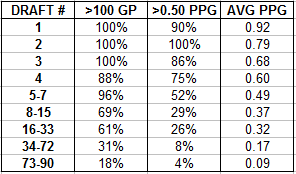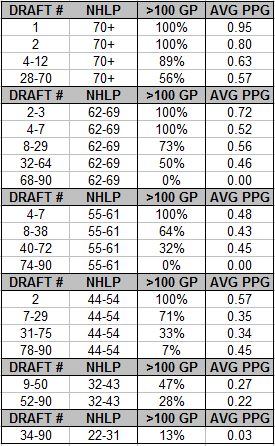Blue Bullet
Registered User
In my latest post at the bluebulletreport.com, I look at the correlation between draft position and career average points per game, as well as the correlation between draft position and career average time on ice, for first round selections. Based on this, one is able to see how accurate teams are at selecting forwards and defenseman. Ideally, the top picks would play the most minutes and produce the most points. In the end, the strongest correlation turns out to be between draft position and career average time on ice for defenseman.
Therefore, d-men are not a bigger gamble than forwards when it comes to reaching their potential. While d-men do take longer to develop than forwards and that should be held in consideration when selecting a d-man, for those teams with patience and the ability to retain the talent they drafted, they should have no concerns over taking a d-man in the first round over a forward.
Therefore, d-men are not a bigger gamble than forwards when it comes to reaching their potential. While d-men do take longer to develop than forwards and that should be held in consideration when selecting a d-man, for those teams with patience and the ability to retain the talent they drafted, they should have no concerns over taking a d-man in the first round over a forward.










